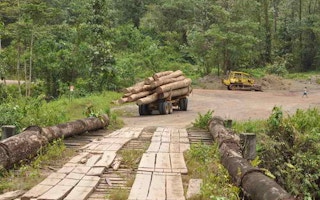New advanced satellite maps of tropical countries reveal that more than 90 per cent of recent tree cover loss took place in natural forests rather than plantations, threatening ecosystems and biodiversity, research shows.
The maps mark a breakthrough in forest monitoring that allows researchers to distinguish between natural growth and oil palm, rubber, timber and other plantations, according to Transparent World, a Russian non-profit, and the US-based World Resources Institute (WRI).
The data found that in Brazil, Colombia, Liberia and Peru, more than 90 per cent of tree cover lost in 2013 and 2014 was natural forest, they said.
“It’s surprising and a little bit disturbing and shows us how much is at stake in those four countries, where most of the forest being lost is natural,” Rachael Petersen, WRI analyst, told the Thomson Reuters Foundation on Wednesday.
“It should make us a little bit concerned about how plantations expand onto natural forest in those countries in the future,” she said.
A measure of tree cover loss includes human-driven deforestation, the harvest of trees on plantations, forest fires and tree mortality due to disease and other natural causes.
Natural forests provide climate, water and biodiversity benefits that oil palm, rubber, timber and other man-made plantations, especially in the tropics, do not, Petersen said.
A natural forest is a complex, self-regenerating system with a microclimate and wide variety of plants and animals, while plantations tend to grow a single species and require ongoing intervention such as fertilization and pesticides, experts say.
Tree plantations comprise 7 per cent of the world’s forest cover, researchers said. The maps covered 45.8 million hectares of plantations in Brazil, Cambodia, Colombia, Indonesia, Liberia, Malaysia and Peru.
Plantations cover almost a third of the land area in Malaysia and 13 per cent of the land in Indonesia. Most are oil palm plantations, followed by rubber.
Malaysia and Indonesia are the world’s top palm oil producers.
In Peru, where plantations cover just 0.1 per cent of the land, more than 5,000 hectares of natural forest was lost to make way for plantations in the last 15 years, the researchers said.










